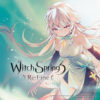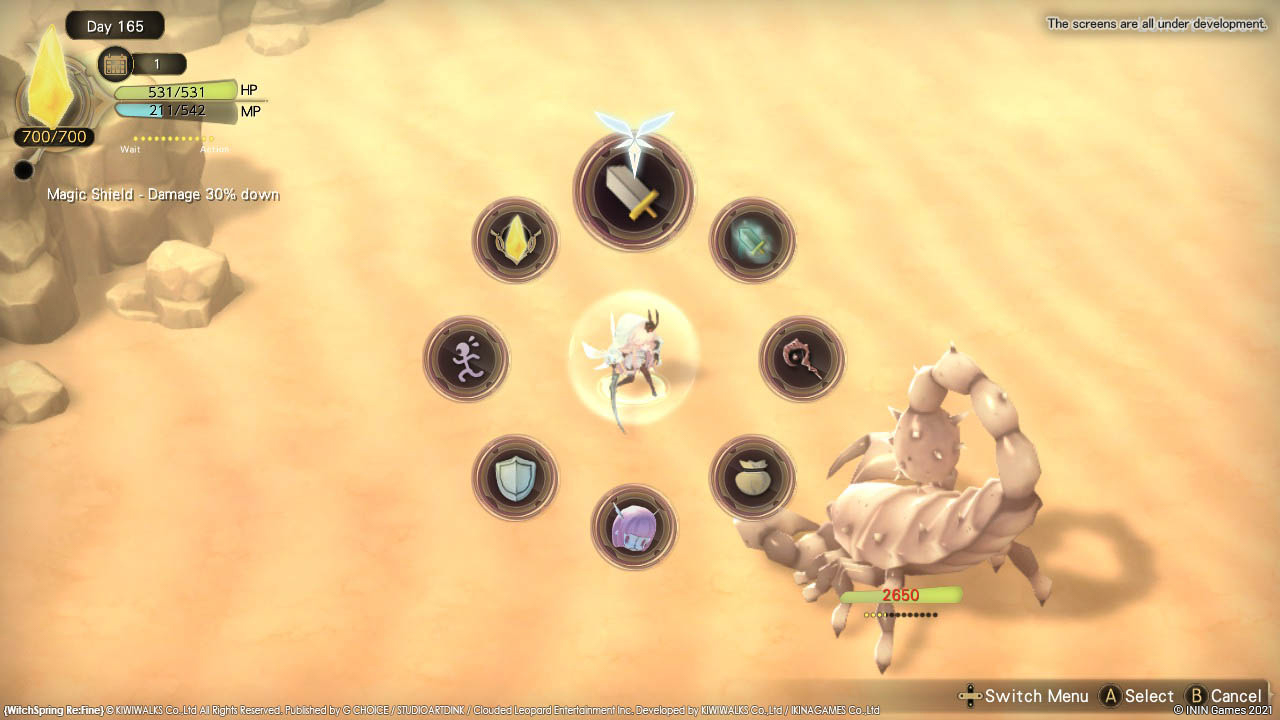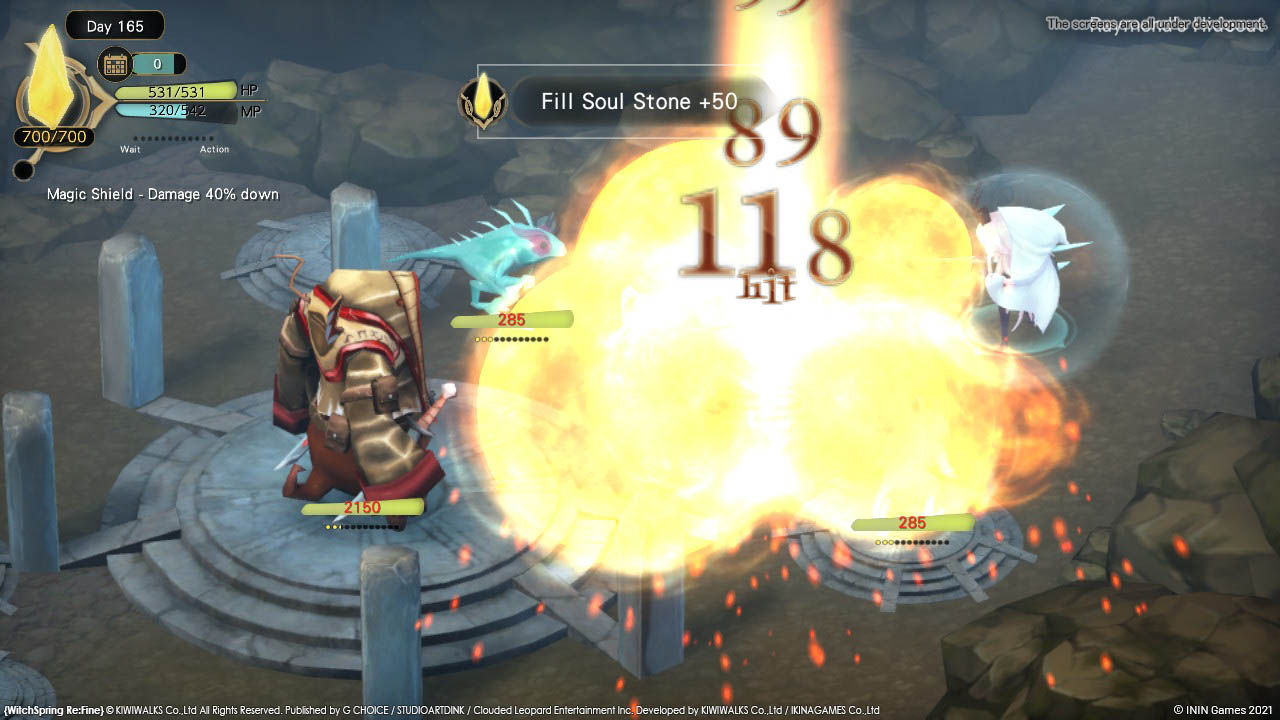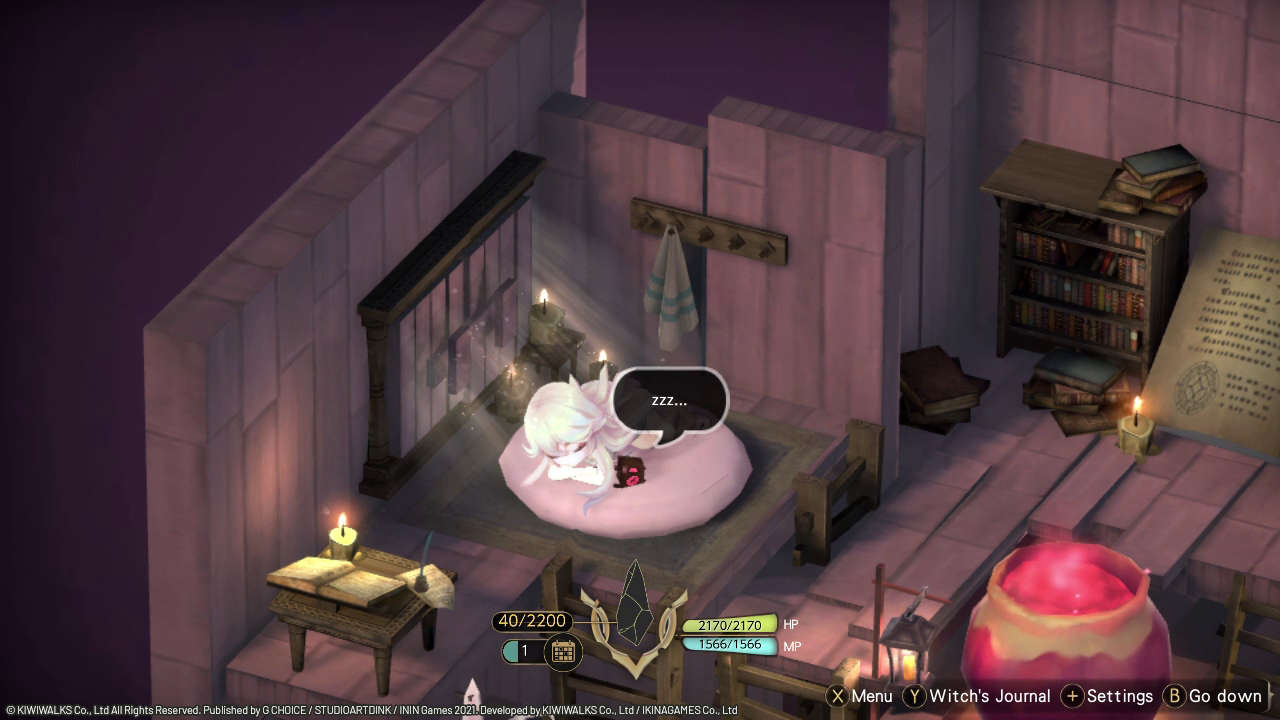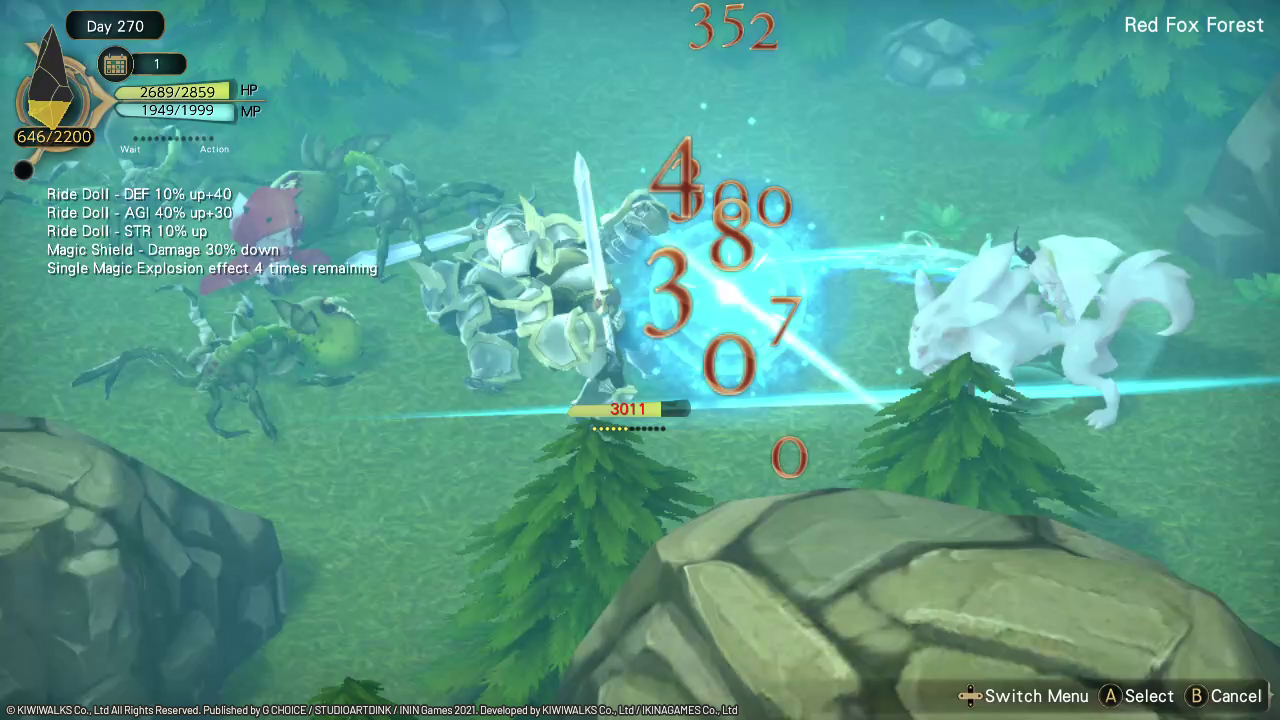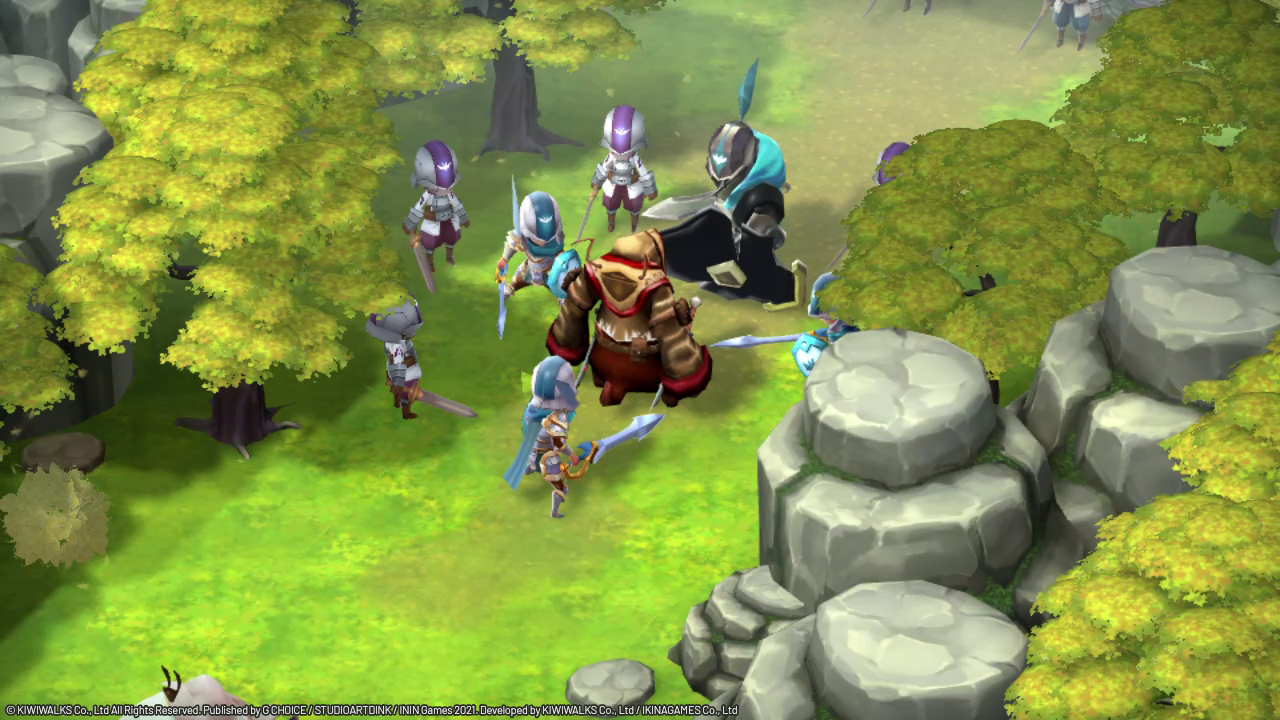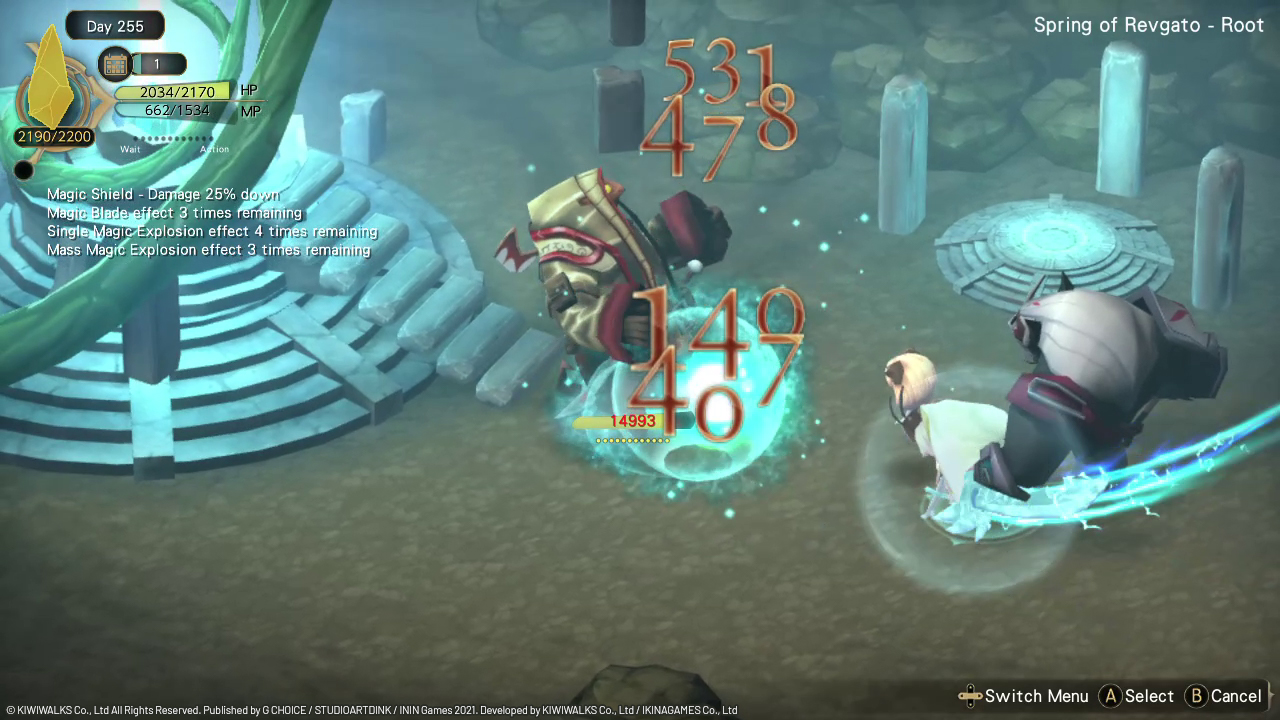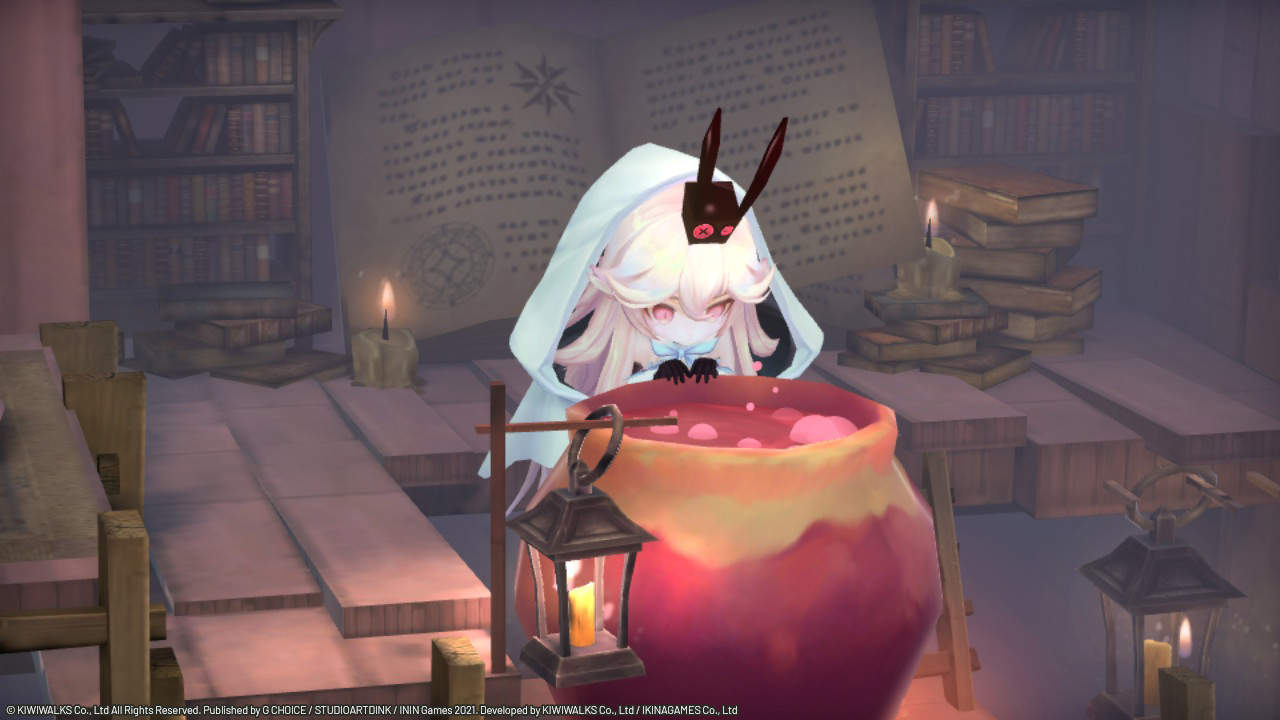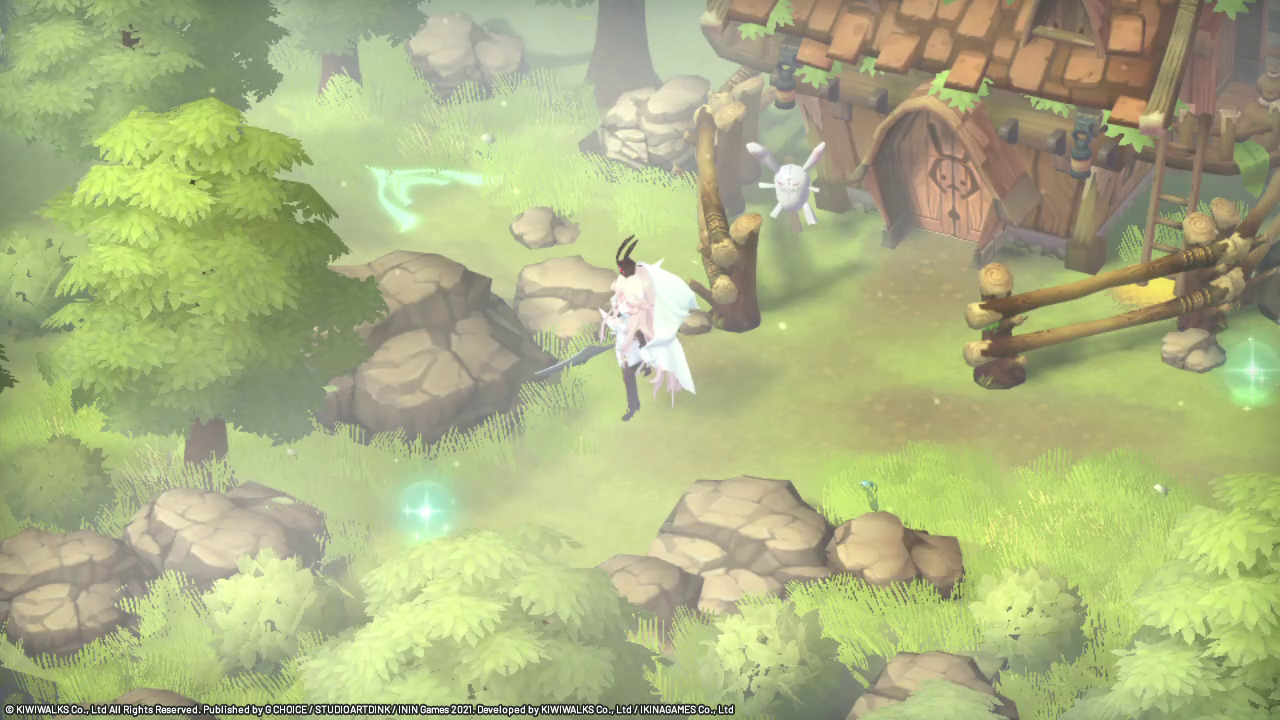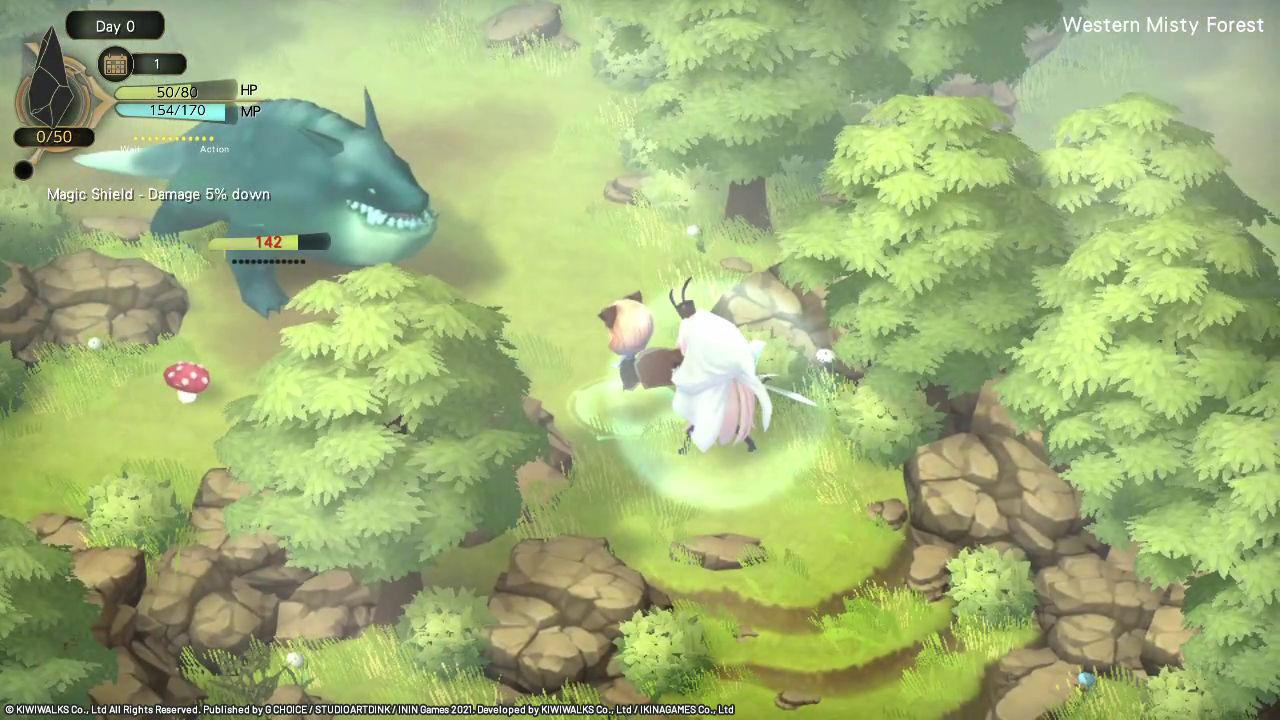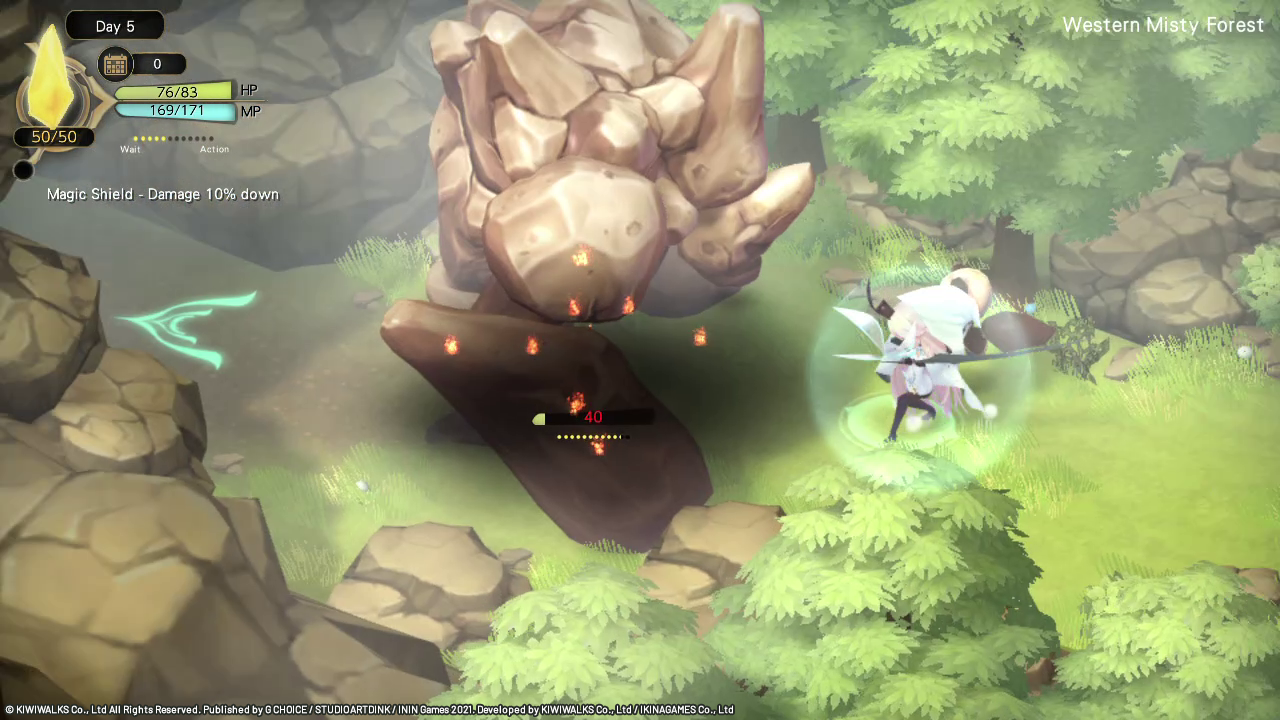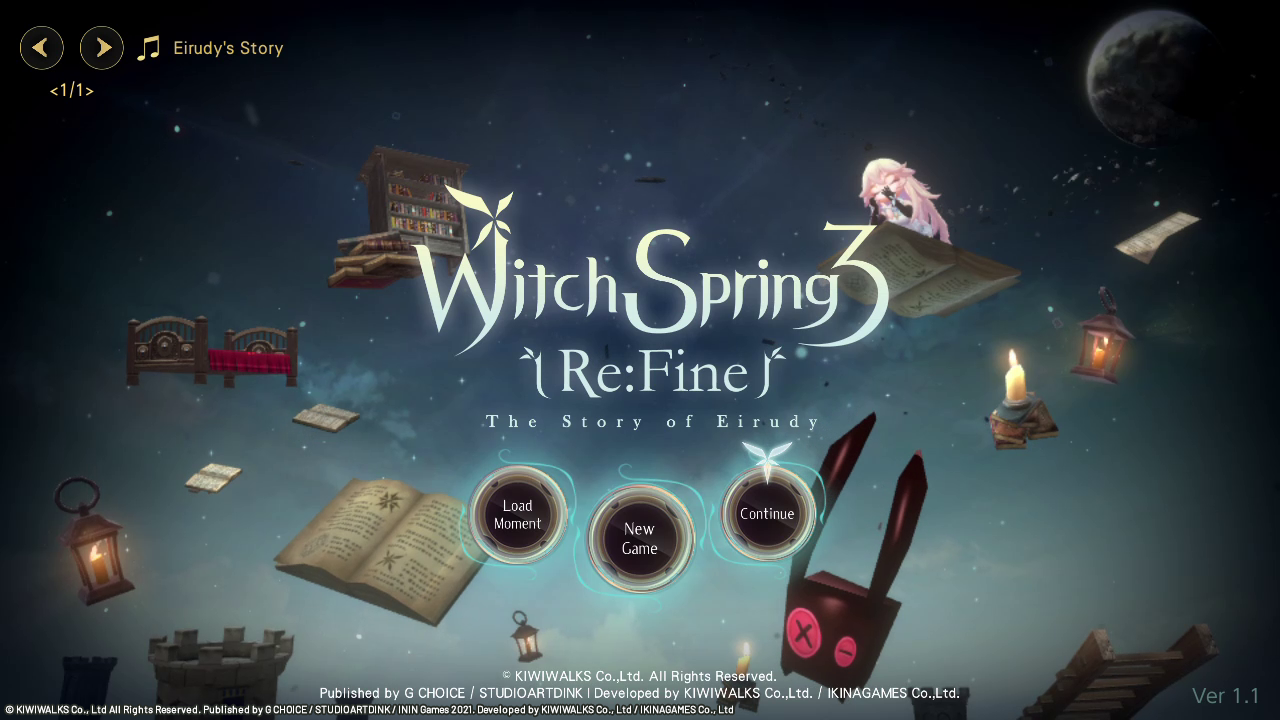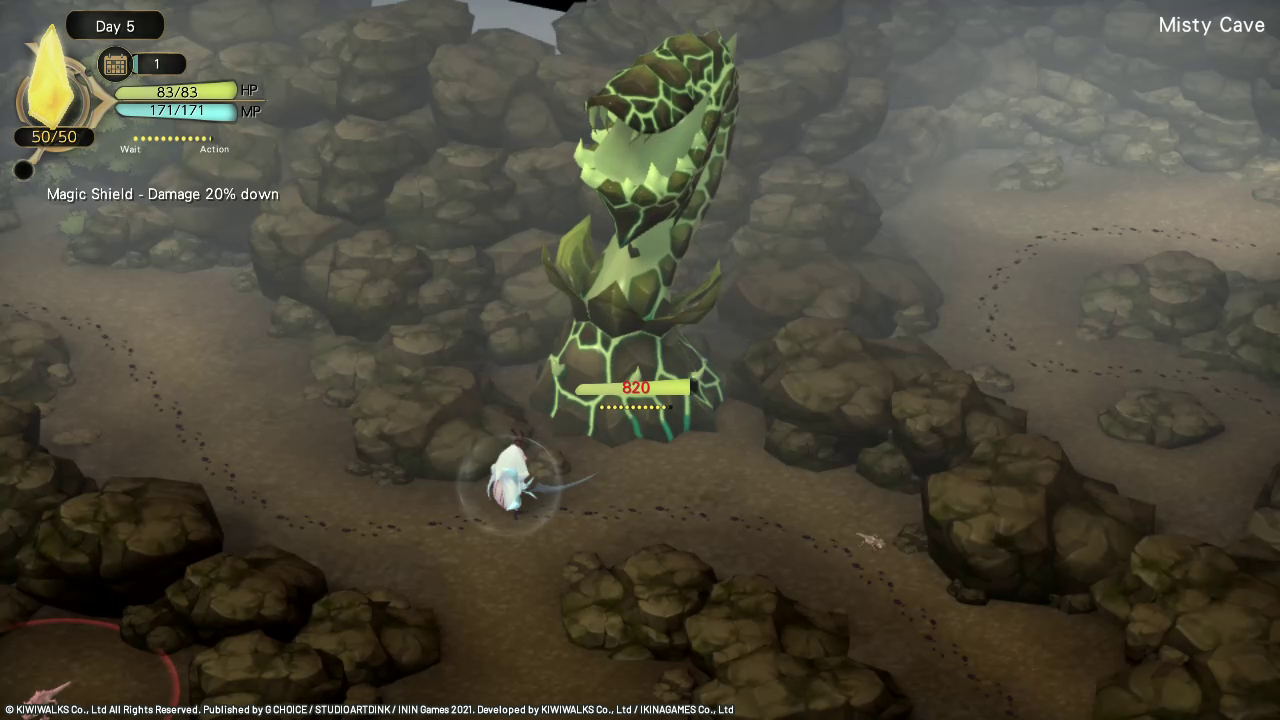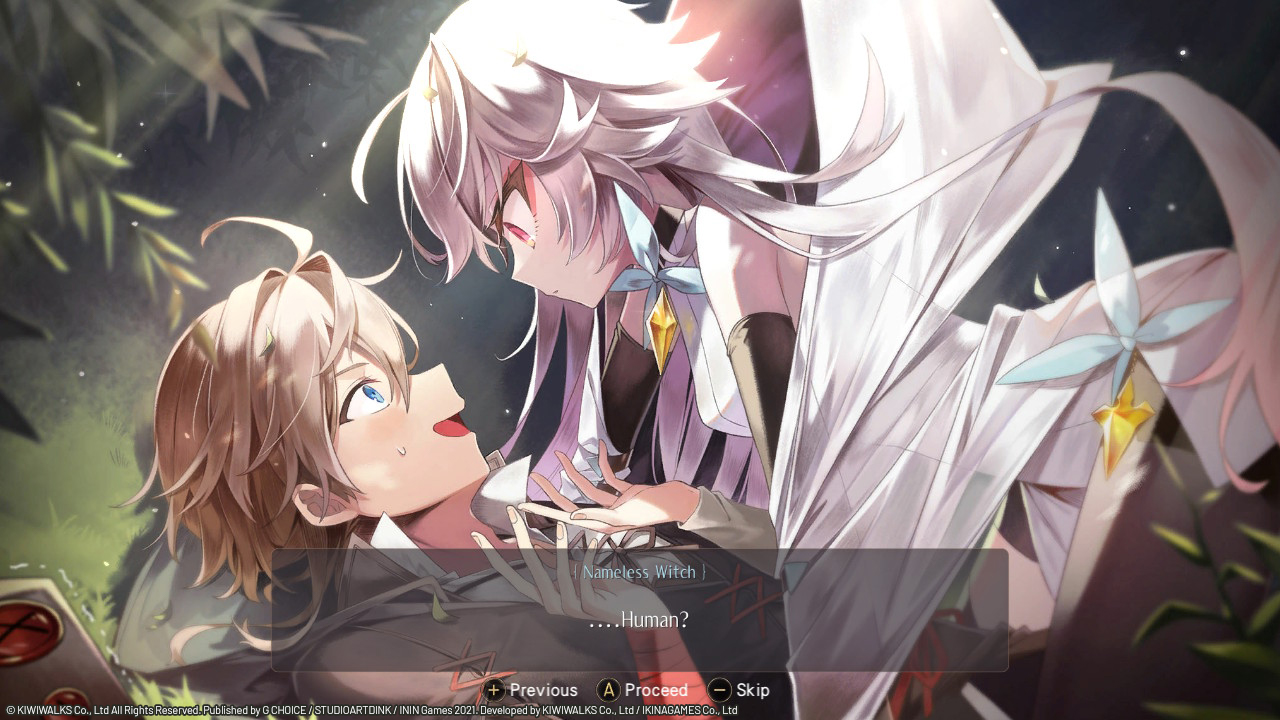Game: “WitchSpring3”
WitchSpring3 [Re:Fine]

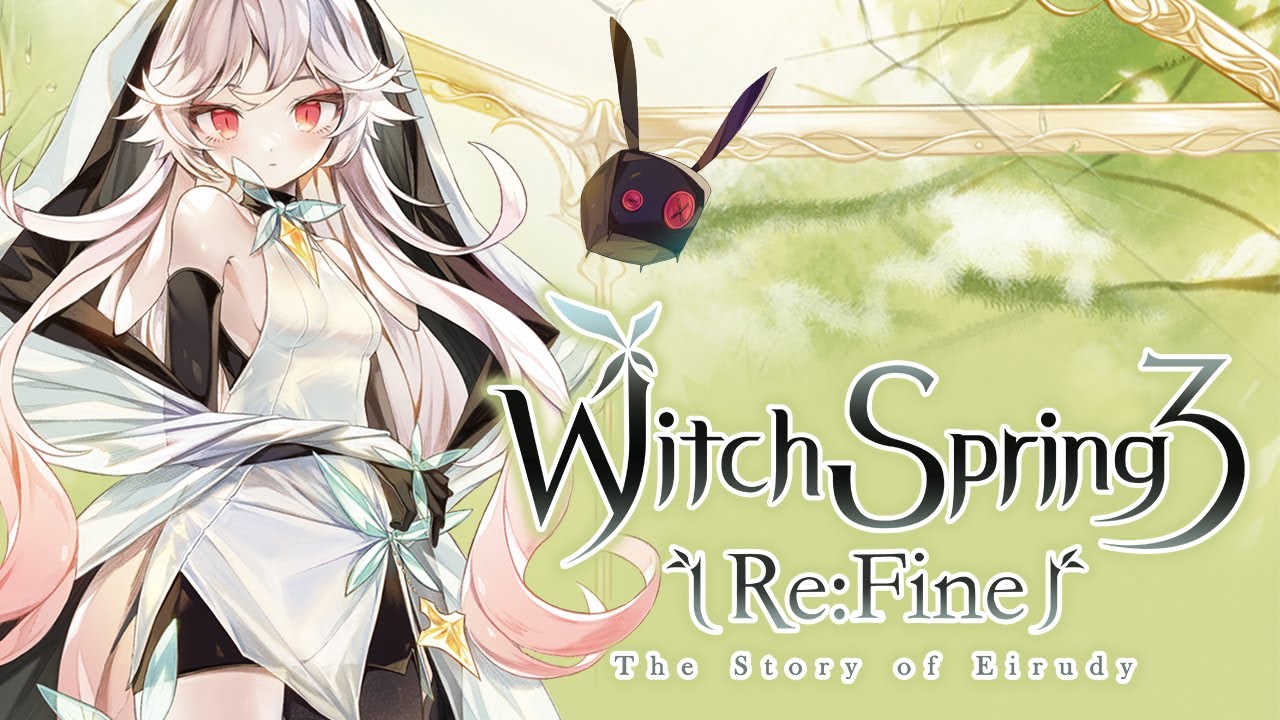
WitchSpring3 is the third of a long running series of mobile games, and the first to come across to the Switch. Originally released in October 2017 for mobile and ported to the Switch in late 2020 for Korean and Japanese markets, the English translation and western release arrived in August of this year. To what degree you should be excited about that depends quite heavily on whether you have any existing familiarity with the series, or such a desperate hunger for more anime-infused JRPG-lite adventures that you have fully exhausted the genre’s better known – and flat out better – examples.
At A Glance
| Scores | |
| Visuals | 4 / 10 |
| Sound | 5 / 10 |
| Gameplay | 6 / 10 |
| Overall | 4 / 10 |
| Positives | + Low risk, challenging combat |
| + Quick to pick up and put down | |
| + Interesting, if poorly executed, concept | |
| Negatives | – Roots as a mobile game very clear |
| – Poor UI and menus | |
| – Some translation issues | |
| Launch Price | £34.99 |
| Our Playtime | 10 Hours |
| Available On | Nintendo Switch |
The story opens with the nameless witch, our protagonist, bemoaning her latest failed creation in her marionette workshop. She names the hapless rabbit-thing “Failur” which, given that she created it, seems a little harsh. This creature will go on to become her hat. I’m not sure this opening casts our heroine in the best light, exacerbated by an early game quest that sees her pursue a boar to the ends of killing it – and its family – for a perceived slight, which I think is played for comedy, but doesn’t quite land.
The witch herself is a whole smorgasbord of anime tropes and cliches, which is a shame as there is an interesting core to her character that isn’t quite able to break out from behind them. She dresses like a lingerie model yet has a near total sexual naivety, appears to be about twenty years old (at a very generous push) while being clearly an experienced polymath in her fields of magic, swordplay, wilderness living, and marionette-creation. It’s difficult to take her seriously when all of her characterisation has been sacrificed in pursuit of fetishising her as an object.
Despite that, the idea of a witch living out in the woods, hiding from the local townsfolk and villagers is, while being itself a well-worn fantasy trope, an intriguing concept for a player character. After a few annoyingly over tutorialised early quests focused on self-improvement the story gets going when she meets a boy intruding in her woods, and is roped into an adventure with him. It’s this boy who names her Eirudy, for her red eyes. Her seclusion, presumably, meant the witch previously had had no need of a name, though it feels a little infantilising. This sits awkwardly alongside the clumsy romantic tension between the two that is quickly crowbarred in.
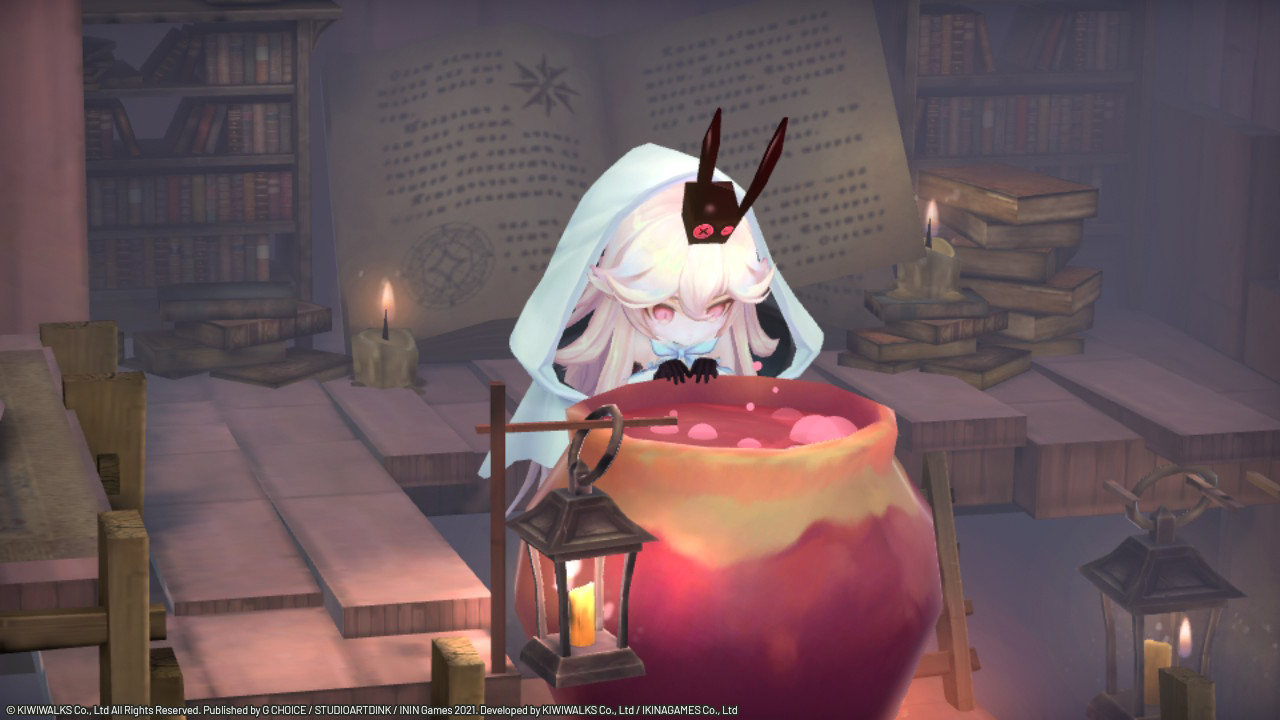
A fair amount of this story is unfortunately lost in translation. The game is fully voice acted, assuming of course, that you speak Japanese or Korean. The rest of us are left to the mercy of the uneven and at times unclear text translation. I accept translating story concepts and dialogue isn’t easy, but when I’m told about my “Combat Performanc” after each encounter I’m left wondering if a spell check was ever allowed a run through the script.
This lack of clarity also extends to other things. The menus are clearly designed for mobile use and, while this in itself isn’t a bad thing, it does mean that a lot of concepts you might otherwise take for granted are missing. Nothing on the rotary menus is labelled, and there is no helpful pop-up text when you select something before confirming it – obviously not something that would be practical for touch controls, but quite standard for anything with a controller. This clumsiness extends to the inventory, so I sure hope you were paying attention when you picked things up or crafted them because once they’re in the witch’s pockets the only way to identify them beyond the picture is to eat them, with predictably unpleasant results.
These shortcomings in presentation and accessibility are a real shame, as the mechanics of the combat system beneath them are actually quite good. Spells and items deal status effects that combine with each other or your standard attacks, while the marionettes work as an interesting take on the party system. You summon in dolls who will do different things in combat, though at a cost of your magic points. Cleverly, this is done as a percentage rather than a fixed point cost, so you never level up to a point where it becomes trivial – there is always a trade off. The combat manages to be challenging enough without being overly punishing – you’re given a view of the enemy stats before combat and a choice to engage or not, you can always flee as long as you can survive until your next turn, and even “death” is only a forced return to your home, with no progress loss. It gives the game quite a relaxed atmosphere without leaving it boring.
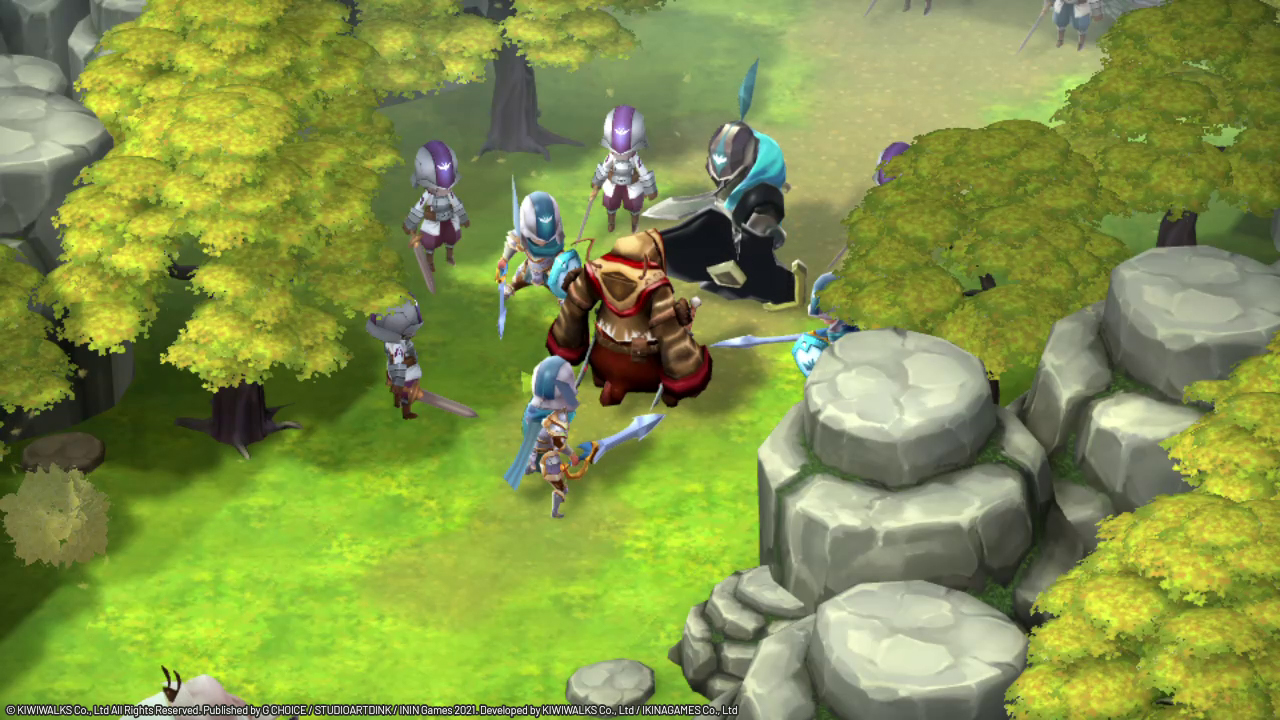
The game runs well, as it really should given it is a four-year old mobile port. It played far better in handheld mode – everything clearly scaled for a 5-8” screen and good implementation of the touchscreen – than in docked mode, where the graphical shortcomings were far more apparent on a larger screen. Visually the game is nothing spectacular – as well as the issues with the unclear UI mentioned above, much of the overworld is very basic, with little interesting going on. Some of the character portraits are quite well detailed but, compared with any visual novel style title I’ve played on the Switch, nothing really stands out here.
More than anything else I think the real issue with this game I have is the asking price. At time of writing it is going for around £30. You can get all four games in the series on mobile for just over a third of that, almost half of which is for the fourth (and newest) game. WitchSpring 3 on Google’s Playstore is priced at £3.87, a far more compelling price point for the title. Given how well it played in handheld compared to docked mode, and the implementation of the touchscreen controls, if you are at all curious about this game I would certainly recommend the mobile version over the Switch for price alone. Not only is it almost ten times cheaper but, if you do enjoy it, there are three whole other games you can get which are still mobile only. As it stands I can’t recommend this game – there are simply too many other games on the Switch doing similar things better, and for a better price.
In the interest of full disclosure, the publisher provided VGamingNews with a copy of the game in order to conduct this review.


